
Keep your schedule lean with Oracle Primavera Cloud (OPC)



Critical Path Method (CPM) schedules have been ruling the world of projects for a long time. Considering the benefits of CPM, that is quite understandable, isn’t it? They provide the bigger picture of the project and allow for scenario and what-if-analyses, risk analyses, delay analyses and critical path analyses. They are useful for assessing the resource needs, they provide the team with due dates for ordering long lead items and they allow to include contingencies for risks. That’s all good news. But now you also want to know what’s wrong with it, I suppose.
Ed. Since June 2019 Oracle Prime is named Oracle Primavera Cloud, fitting Oracle’s strategy to incorporate Primavera P6 EPPM in this integrated project controls tool. Since the post below dates from 2017, we updated it to match the new naming (OPC or Oracle Primavera Cloud).
Well, in fact, you already do know what's wrong with CPM. CPM schedules are often very time-consuming to maintain, especially when they are used to develop detailed work plans. And, probably, these schedules didn’t make site-people happy the last time you’ve produced your updated schedule and submitted it to them in pdf. In fact, they are never happy and always argue that what your schedule shows, isn’t realistic.
The right tool for the job
But does the problem lie with CPM? As long as you use techniques for what they are meant to be used, all is fine. CPM schedules where never intended to instruct people on site what to do, when and where. That is just too detailed to maintain in a CPM schedule. With this method, you are imposing a schedule top-down, it’s a push-planning. People feel micromanaged and not involved in the planning process. It will be difficult to obtain buy-in from the site team which may result to project failure. This is an example of stakeholders’ engagement failure.
So, at a certain point, you might want to consider alternative methods. One of the alternatives that has been trending is lean scheduling. In this method, weekly work plans are generated, often by using Post-it work plans. These plans zoom in on just one week: the upcoming one, in which tasks are planned on a specific day or during a short period. Information comes from the people on site who commit to finishing a certain task on a certain day. Weekly work plans can include information such as the number of laborers and the required equipment.
The most important aspect of this method is that it is a pull-planning! The responsibility of planning “what” is done “when” has shifted from planning engineers with little expertise in the work that needs to be done, to the actual experts in the field. This aspect cannot be overestimated: now the people on site are involved and voluntarily commit to executing tasks according to a schedule that was agreed upon by all. So, you get a more realistic planning and people willing to commit to it. That can only be a good thing, right?
However, we believe that the risk of losing the bigger picture of the project is high when dealing with a lean scheduling method. Lean scheduling focuses on the upcoming weeks and if there is a change, it’s difficult to analyze the long-term consequences. This method is just not the right instrument for long term projections. And wasn’t that exactly one of the merits of CPM? This means you should be looking to integrate both CPM and lean methods, like many experts advocate. But this is easier said than done without the help of proper software package.
Combining CPM and lean will give you the challenge of integrating the low-level detailed schedules into the high-level CPM schedule. This was exactly what Oracle envisioned when they introduced us one of the modules of OPC, the Tasks app. But have they succeeded?
Lean Scheduling in OPC (Oracle Primavera Cloud)
We will now assume that you know the fundamentals of Lean Scheduling. If not, it might be beneficial to read our blog post dedicated to this method first.
The typical lean environment is recreated in OPC by the “Work Plan window” shown in Figure 1. This brings the Post-it wall to your computer screen. At the left side, you can find all defined tasks without due date. A calendar is shown in the middle pane where stickers represent tasks that are distributed and stretched, according to their due dates and durations respectively. Automatically, tasks are grouped under the (CPM-)activity they belong to. Note that every Post-it is color-coded to represent a company. Finally, at the right side of the screen, you have the upcoming weeks in which you can drop tasks as well.
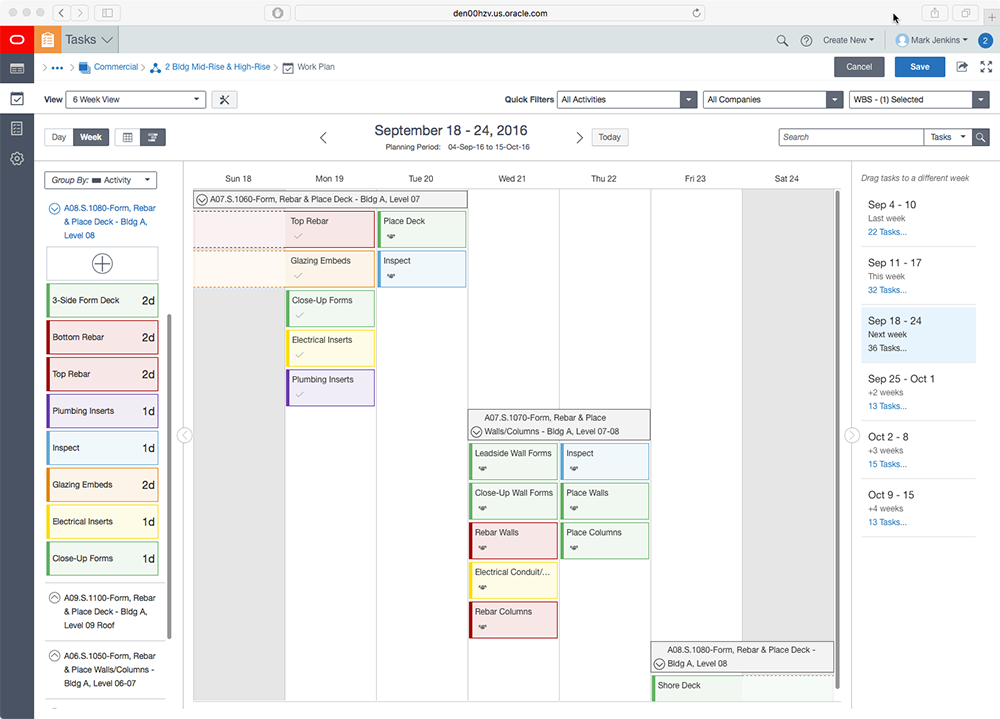
It was stressed that an important aspect of lean scheduling is that it is a pull-method. The site-people (represented by e.g. their foreman) performing the tasks, determine when they plan to do the job and commit to it. In the Work Plan they can explicitly commit to a task’s due date. After committing to a task, they can mark it as completed, or they can recommit if necessary and justify why they missed that commitment (i.e. reasons missed). Also, it is possible to communicate with the team, enhancing collaboration, by sending messages.
One can perform several actions (committing, sending messages and marking as complete) in different manners. In Figure 2 the task sticker is shown where the three icons each mean one of those actions. The tabs shown in Figure 3 allow you to perform the same, and some more actions.
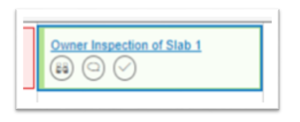
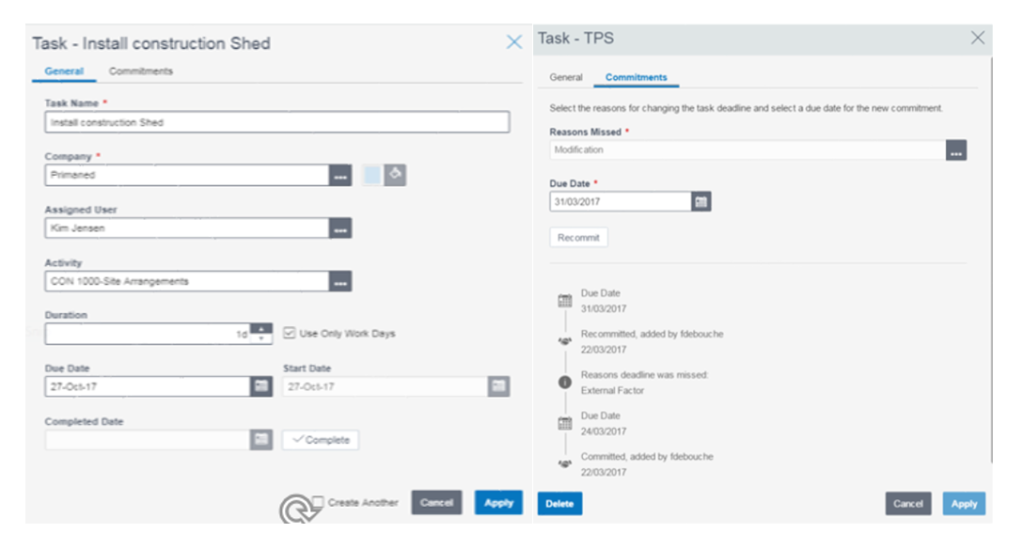
Most of those actions are also available within the Mobile app (ref. Figure 4). The main shortfall here is that it is just a list-view and tasks can’t be dropped into the calendar.
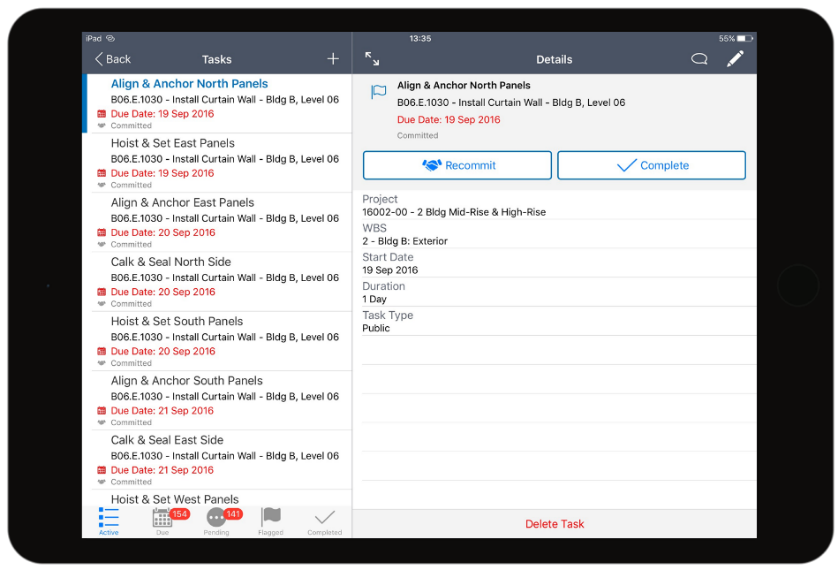
The resulting planning can be found in a different window from this app, named Tasks (maybe Oracle could have been more original with this name), shown in Figure 5. Here we can find a grid with the list of tasks and bar chart, a view similar to a classic schedule with Gantt chart. Note that no precedence relationships exist between the tasks. They are ‘loosely’ scheduled during the window provided by the activity laying above.
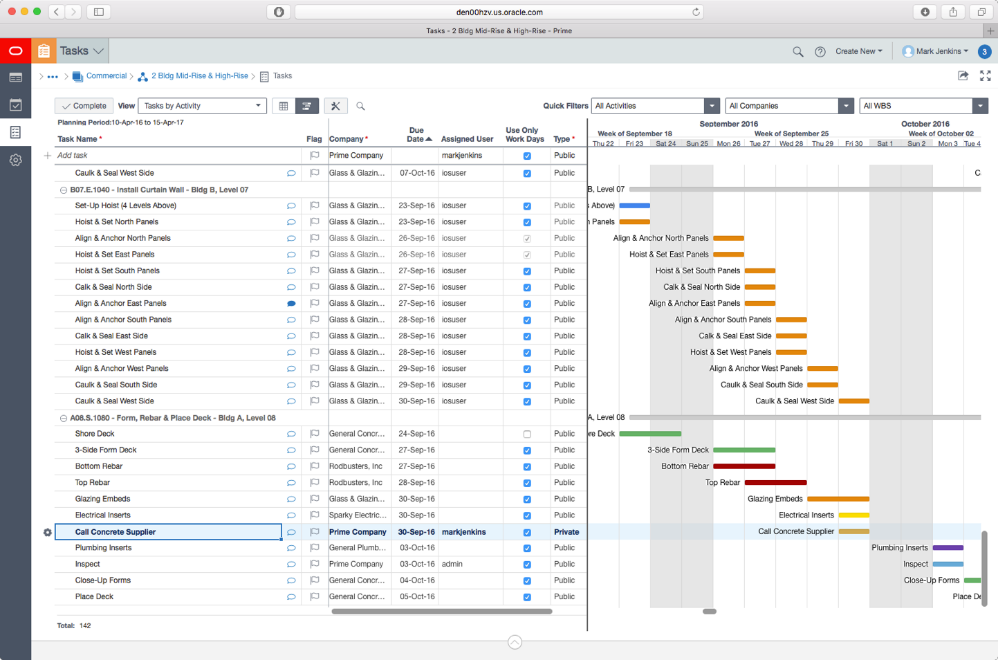
The performance of a team or company can be monitored in dashboards. Figure 6 shows an available standard dashboard. ‘Performance’ has to be interpreted as the percent of committed tasks completed in time.
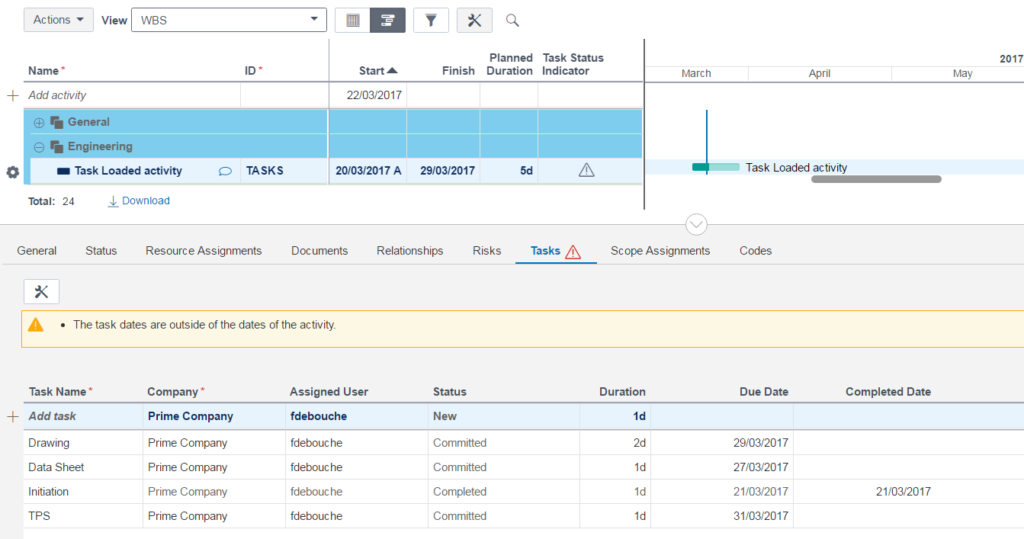
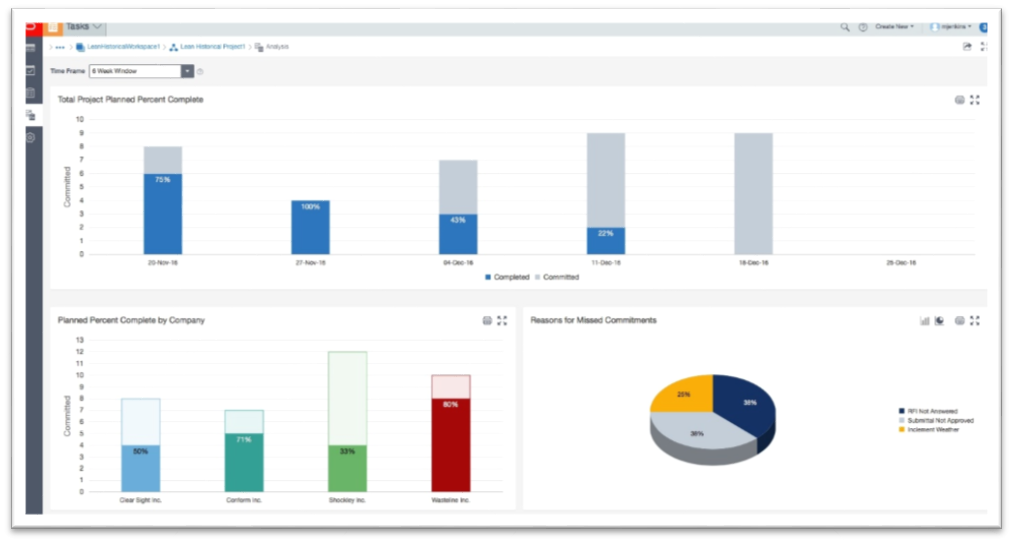
Integration between CPM and Lean Scheduling in OPC (Oracle Primavera Cloud)
Maybe you have noticed that in OPC, activities and tasks are no longer synonyms. Activities originate from the Schedule app where the CPM schedule lives. They provide you with high-level windows during which tasks have to be executed. Those tasks are the smaller chunks of operations to which executioners commit.
But the best is yet to come. Oracle Primavera Cloud enables the synchronization between task and activity. You’ll be alerted when a task’s due date is not inside the relevant activity window. As you can see in Figure 7, a task which is committed to be completed on the 31st, falls outside of the window provided by the activity laying above (which has a due date on the 29th). The Task Status Indicator will alert you in this instance and action may be required.
Figure 7: Integration of CPM and Lean
Conclusions
Oracle has succeeded in finding an elegant solution for integrating the critical path and the lean scheduling methods. The benefits of both methods are still there, but the shortcomings are compensated by the other method.
Consequently, our enthusiasm for this new tool seems obvious. It is intuitive and powerful, and the limitations that may still exist are not relevant enough to diminish it.
So, if Lean Scheduling has caught your attention before, but you were not sure how you could implement it within your company or project, the Tasks app may be the tool for you. And Proove, of course, is your go-to trusted partner for advice and implementation.



